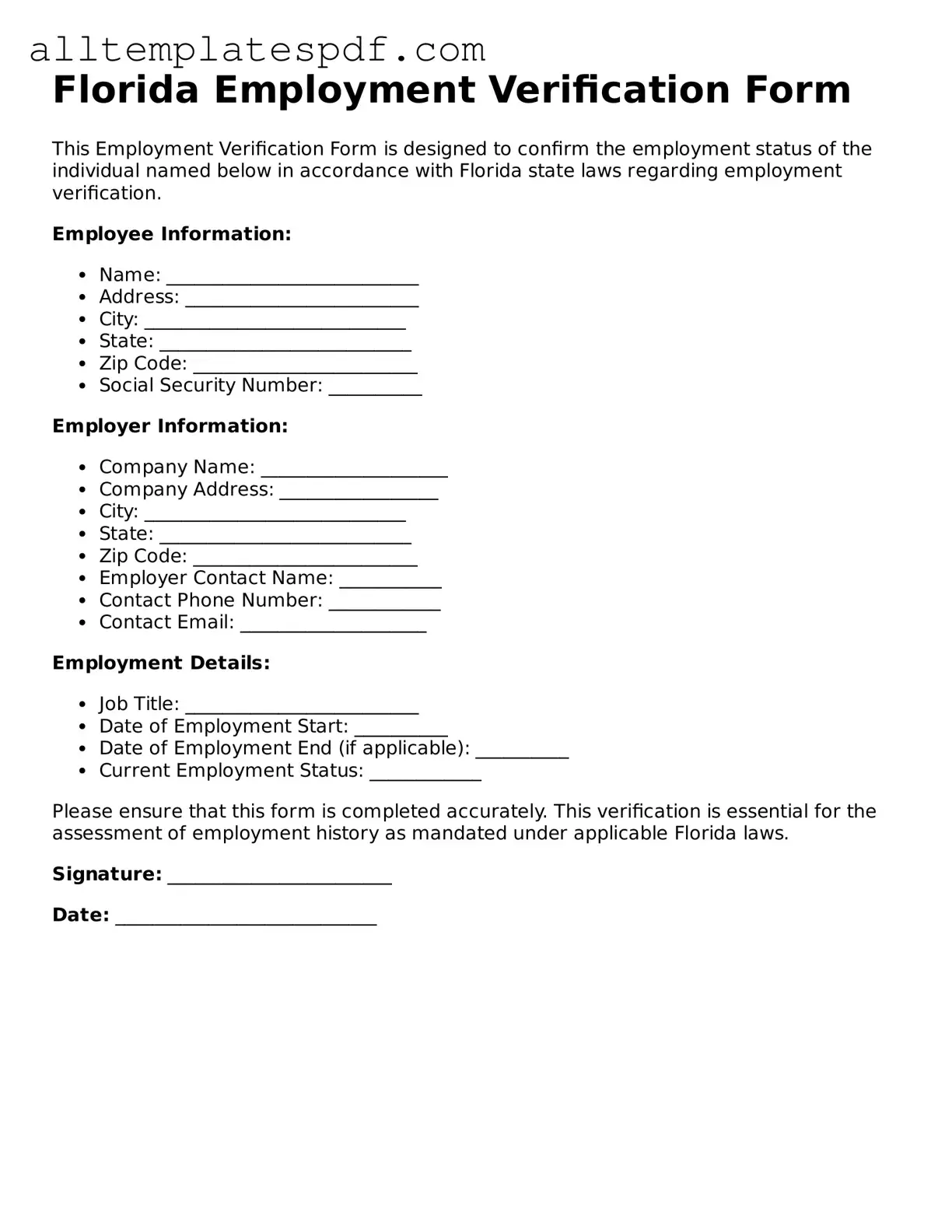Blank Employment Verification Template for the State of Florida
The Florida Employment Verification form is a document used to confirm an individual's employment status and details in the state of Florida. This form plays a crucial role in various processes, such as loan applications, rental agreements, and background checks. Completing this form accurately is essential for both employers and employees, ensuring that employment information is verified efficiently.
Ready to get started? Fill out the Employment Verification form by clicking the button below.
Open Editor
